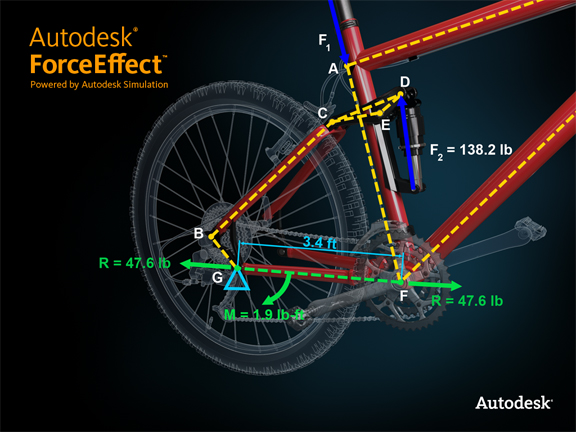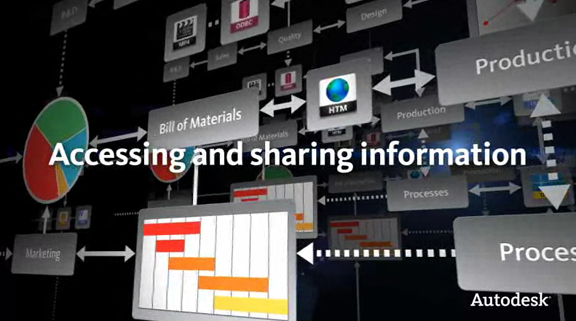Latest News
November 29, 2011
Early this week in Las Vegas, the weather is expected to be sunny, with temperatures in the low 70s Fahrenheit But along the marble-tiled corridors bridging The Palazzo and The Venetian, at St. Mark’s Square by the Grand Canal (reconstructed beneath a painted evening sky in Sin City to mimic the real locale in Venice), the climate turns cloudy.
It’s the first day of Autodesk University (AU) 2011, the annual gathering of Autodesk software users. Attendees—ranging from architect designing highrises and automotive stylists skinning new Ford models to filmmakers populating virtual worlds with computer-generated alien species—have begun to arrive. It’s also the day product managers and company executives give members of the press snippets of the content they’ve lined up for the next few days.
“What’s the target [computing] platform you’re developing your software for the future?” an analyst asked Buzz Kross, senior VP of manufacturing at Autodesk.
“Cloud and mobile,” Kross replied.
In the press briefing room, the click-clacks of laptop keyboards were once the norm, providing rhythm to the news beat. Now, faint finger-taps on iPads filled the same room, punctuated by occasional pings from Tweet Deck users.
As Autodesk gambles on the inevitable computing climate change, it’s also venturing into uncharted waters: consumer-friendly design apps and optional services powered by cloud.
Software, Augmented with Services
Carl Bass, Autodesk CEO, explains a fundamental change in the company’s strategy, inspired by its exploration of the cloud.
“I’m now providing more than just software,” he noted. “I’m also providing services.”
Examples of Autodesk software with augmented services include:
- Autodesk Inventor, with optional plug-in that can run design optimization algorithms in the cloud;
- AutoCAD and Autodesk Revit, with optional cloud-hosted rendering services; and
- Autodesk 3ds Max, with optional rendering feature that runs on remote GPUs from NVIDIA.
Bass said, “I imagine people will do a mix—[public] cloud for peak demand, along with in-house [servers].”
Fusion for Mac
Following in the footsteps of AutoCAD, the company’s direct-modeling software Autodesk Inventor Fusion may soon get the Mac treatment.
Kevin Schneider, Autodesk’s senior product line manager, couldn’t help but notice that, among students he met through his involvement with FIRST robotic competitions, Mac users easily outnumber Windows users, giving him clues of Mac’s popularity in the next generation of designers and engineers.
The preview Inventor Fusion code Schneider demonstrated today is written to run as native Mac software. It doesn’t need an emulated Windows operating environment to run.
As Fusion’s direct-editing capabilities make their ways into Autodesk Inventor’s parametric workflow, Autodesk is exploring the use of Fusion for assembly management and modeling. Fusion’s push-pull modeling method, the company believes, makes refining, adjusting, and fitting subcomponents in an assembly much easier.
Autodesk Fusion has a number of rivals, including Siemens PLM Software’s Solid Edge with Synchronous Technology, PTC CoCreate (recently renamed PTC Creo Direct), and SpaceClaim.
“Nobody has taken direct modeling to the next step—assembly modeling,” said Schneider.
Sketch and Solve on iPad
Simulation, generally associated with powerful desktop workstations and server clusters, is getting the iPad treatment, dubbed Autodesk ForceEffect. Available now from Apple app store, the mobile app allows users to sketch diagrams representing joints and connections in a mechanical assembly, define loads and constraints, then run the solver to simulate the force’s impact on a particular design.
“For almost all customers, simulation has become mission critical,” according to Scott Reese, senior director of digital simulation.
While complex analysis jobs (such as multiphysics and computational fluid dynamics) still rely on workstations and server clusters, simple stress analysis jobs and force-impact calculations may soon be done on mobile devices. Other software makers who share this vision have also developed and released mobile apps (such as NEi Software’s NEi Stratus and Maplesoft’s Maplesoft Player).
An About-Face in PLM
Once Autodesk’s Bass has famously said, “PLM (product lifecycle management) is a solution in search of a problem,” mocking his competitors who sell PLM software suites. But in the last year or so, Autodesk seems to have had a change of heart. It’s now announcing its intent to enter the PLM market.
Lest it should raise eyebrows among hardcore CAD users, Autodesk’s Kross said, “We will now do PLM, but design will always be important for us—I want to reassure everybody.”
The IT backbone Autodesk has put in place to provide cloud-hosted services and its experience in mobile apps suggests Autodesk’s PLM may incorporate both cloud and mobile computing.
Details on Autodesk’s PLM, promoted via a video as Autodesk 360, are expected to emerge in the next few days. The ad campaign promises: “11..29.11—everything changes.”
A new day is dawning at the Venetian. Change—good or bad—seems inevitable.
Subscribe to our FREE magazine, FREE email newsletters or both!
Latest News
About the Author
Kenneth Wong is Digital Engineering’s resident blogger and senior editor. Email him at [email protected] or share your thoughts on this article at digitaleng.news/facebook.
Follow DE







